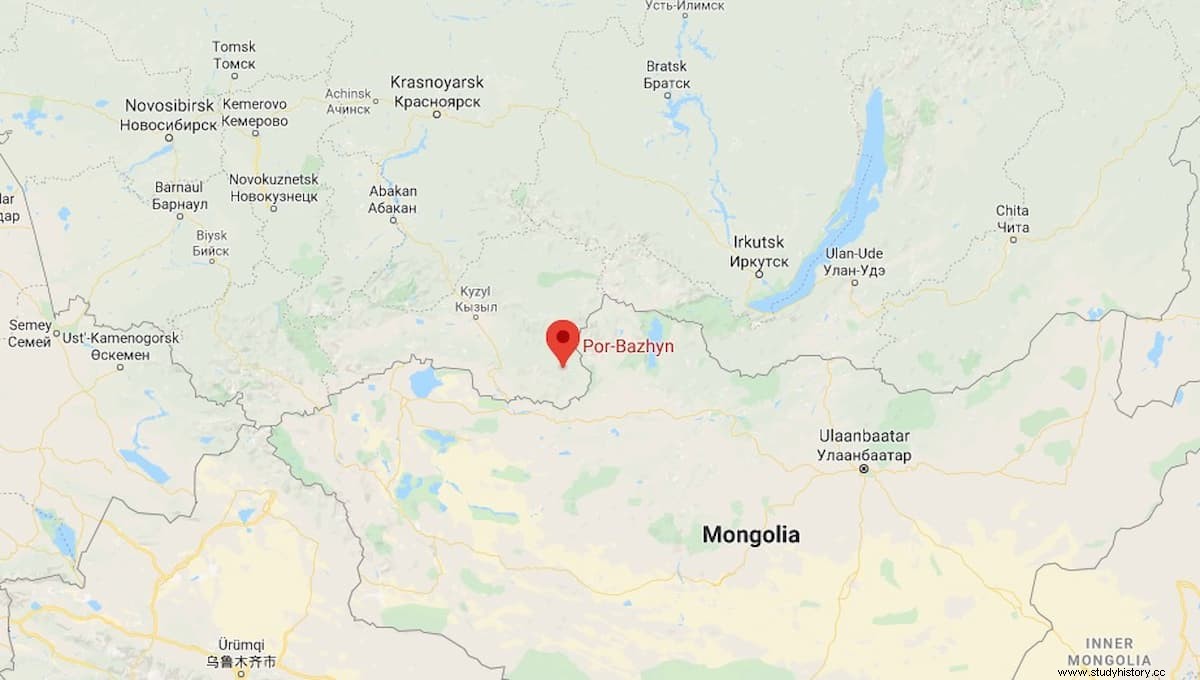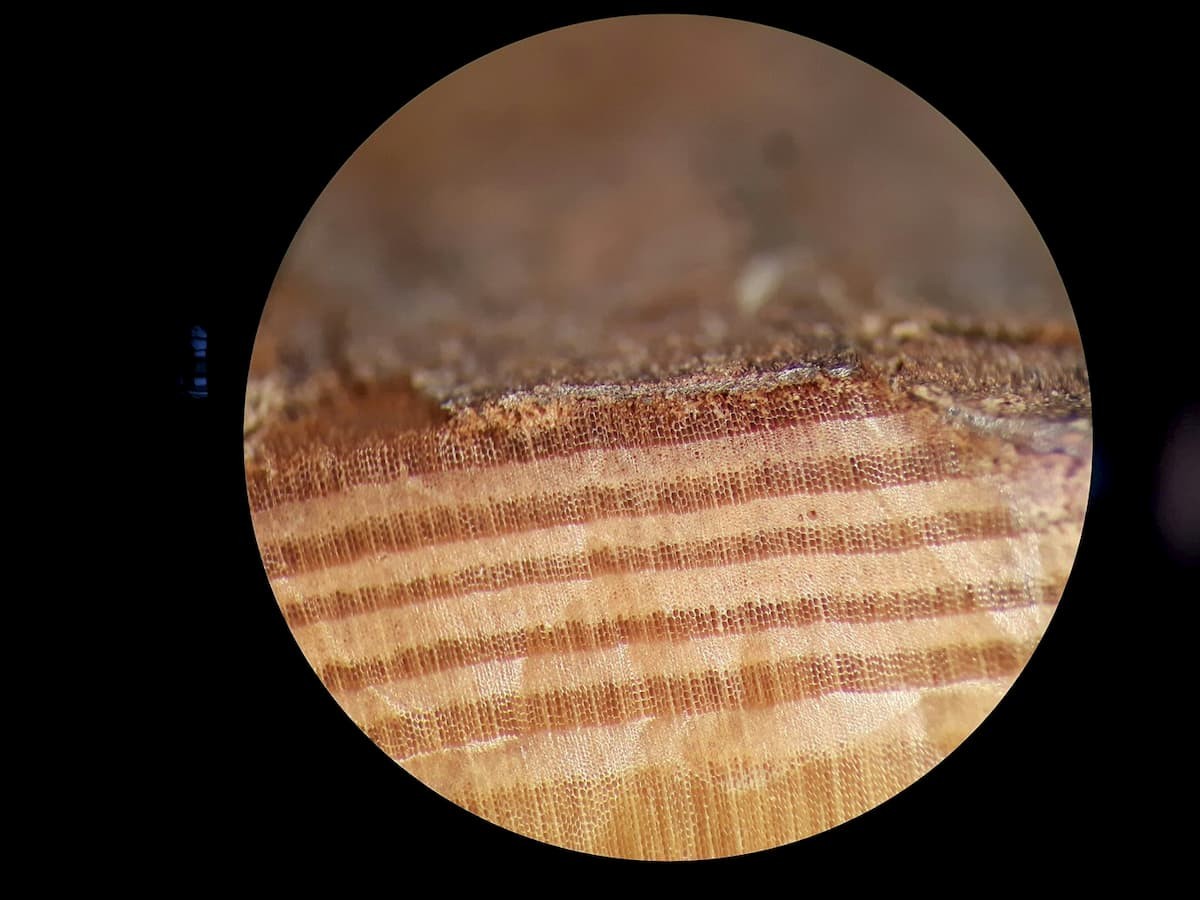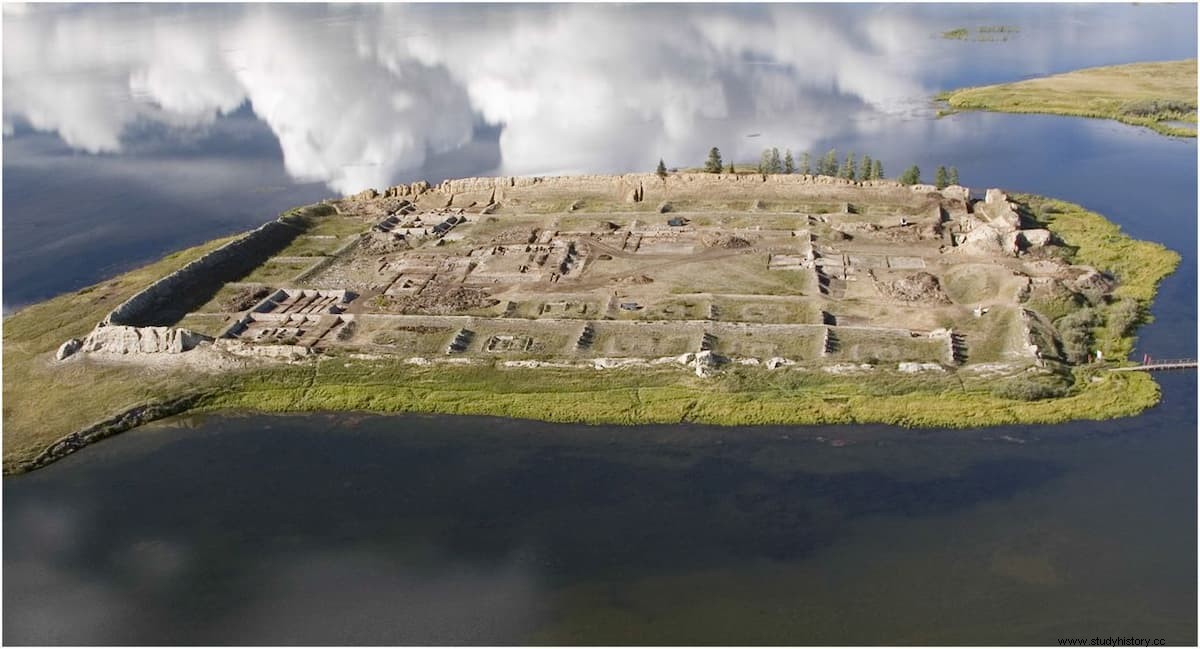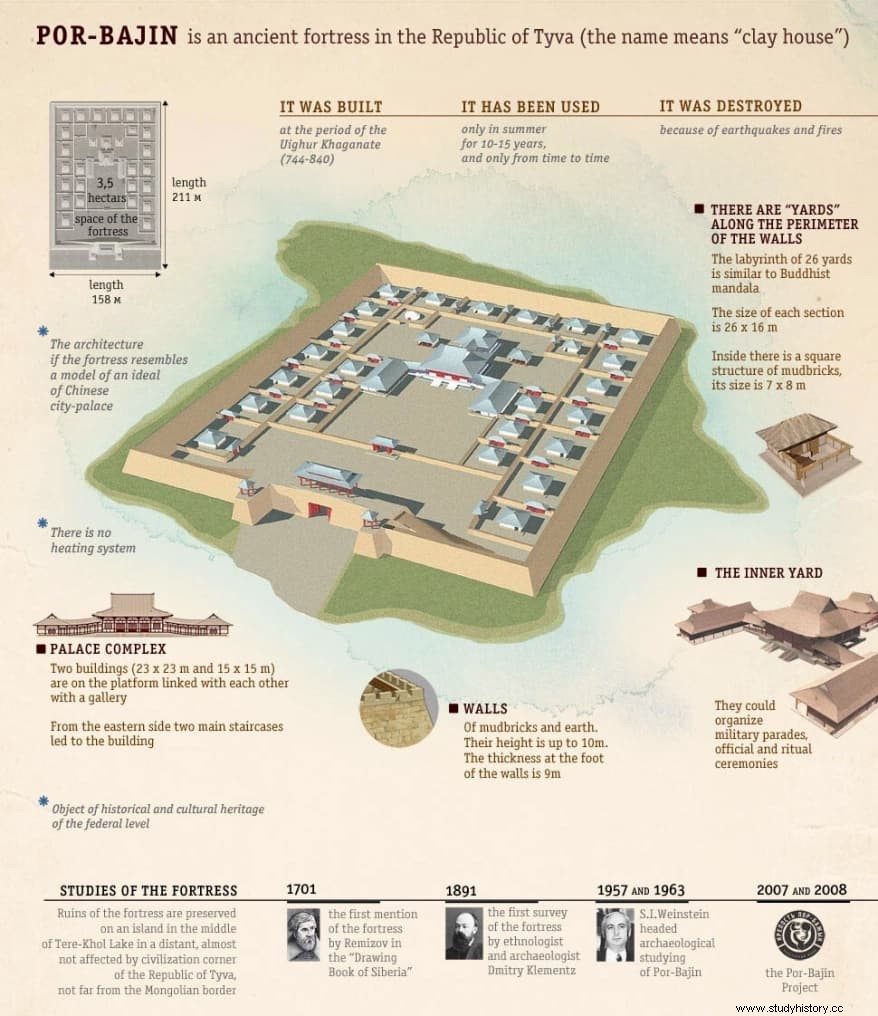On the border between the Russian Federation and Mongolia, in the mountains to the south of Tuva, there is a large complex of clay buildings called Por-Bajin. It's located on an island in a lake, and until now archaeologists weren't sure who built it and what its purpose was. What they did know is that it was never used.
Accurately dating archaeological objects is difficult, even when techniques such as radiocarbon dating are used. Using a newly developed method, based on the presence of sudden spikes in the concentration of carbon 14, scientists from Russia and the University of Groningen in the Netherlands have fixed the construction date of the mysterious Por-Bajin complex, from the 8th century to the southern Siberia. This allows archaeologists to finally understand the purpose of its construction and why it was never used. The results were published in Proceedings of the National Academy of Sciences .
The Por-Bajin complex, on the border of the Russian Federation and Mongolia, measures 215 by 162 meters and has twelve-meter-high outer walls. All the walls are made of clay (Por-Bajin translates as clay house ) on a base of wooden beams. The complex was created by Uyghur nomads, sometime in the 8th century. But the archaeologists did not know the purpose of the complex and why it was never used.

To understand this, the exact date of construction was required to find out which local leader, or khan, gave the orders for the construction , explains Dr. Margot Kuitems, a postdoctoral researcher at the Isotope Research Center at the University of Groningen.
For the early medieval period, radiocarbon dating is generally accurate to within a few decades. This is sufficient for most applications. However, as khans came and went during the 8th century, the exact date of construction was required to link it to a specific leader. Within the ECHOES project, Kuitems applied a newly developed method to accurately date her samples. 
Carbon-14 (a radioactive isotope of carbon) is created in the upper atmosphere. Plants absorb carbon dioxide, which includes a small amount of carbon-14. When the plant – or the animal that ate the plant – dies, carbon uptake stops and carbon-14 slowly decays. Every 5,730 years, half of the carbon-14 decays. Therefore, the concentration of carbon-14 tells you the age of the object (animal, plant, or any other organic material).
The production rates of carbon-14 in the atmosphere are not constant. However, changes in atmospheric carbon-14 were thought to show little variation from year to year. Then, in 2013, Japanese professor Fusa Miyake analyzed individual tree rings and found a dramatic spike in carbon-14 content in the year 775.
When you find wood at an archaeological site from that period, you can look for the peak by measuring the carbon 14 content of subsequent tree rings Kuitems explains. The beak tells you which tree ring grew in the year 775. And when the sample includes the bark, it's even possible to determine when the tree was felled .
This approach was used to analyze a beam taken from the very foundation of the Por-Bajin complex. The sample they used had 45 rings, followed by the bark. Measurements showed that the peak dating to AD 775 was present in ring 43. So we knew the tree was felled in 777. Tree-ring specialist and co-author Petra Doeve determined that the final, partial ring was created in the spring. In southern Siberia, there is a clear distinction between summer and winter forest.

Russian archaeologists previously reported that the entire complex was completed in a very short time, about two years. Por-Bajin is situated on an island in a lake and the trees were determined to have come from the surrounding area.
We are pretty sure that they were cut down for the construction of the complex, and therefore it is very likely that the construction took place around the year 777 . Previously, the site had been dated to the year 750, based on a runic inscription on a monument called Selenga Stone , which described the construction of a large complex.
In the year 750, Bayan-Chur Khan ruled the Uyghurs. He was married to a Chinese princess and this may explain why some Chinese influences were found in the Por-Bajin complex. However, previous radiocarbon dating attempts already suggested that the buildings could be slightly younger.

In the year 777, Tengri Bögü Khan was in command. He had converted to Manichaeism, a Gnostic religion that aroused strong opposition. In fact, Bögü Khan was killed during an anti-Manichean rebellion in 779. All of this is clearly linked to the archaeological evidence Kuitems explains. It is likely that the complex was built to serve as a Manichaean monastery. This explains why it was never used after the Anti-Manicheans defeated Bögü Khan. If it had been a palace or a fortress, it is more likely that the victors would have stayed. .
Study shows how carbon 14 spikes can help solve archaeological puzzles Kuitems says. This technology can be really useful in cases where an exact date is required . And as more peaks are identified, its uses will become more widespread.
